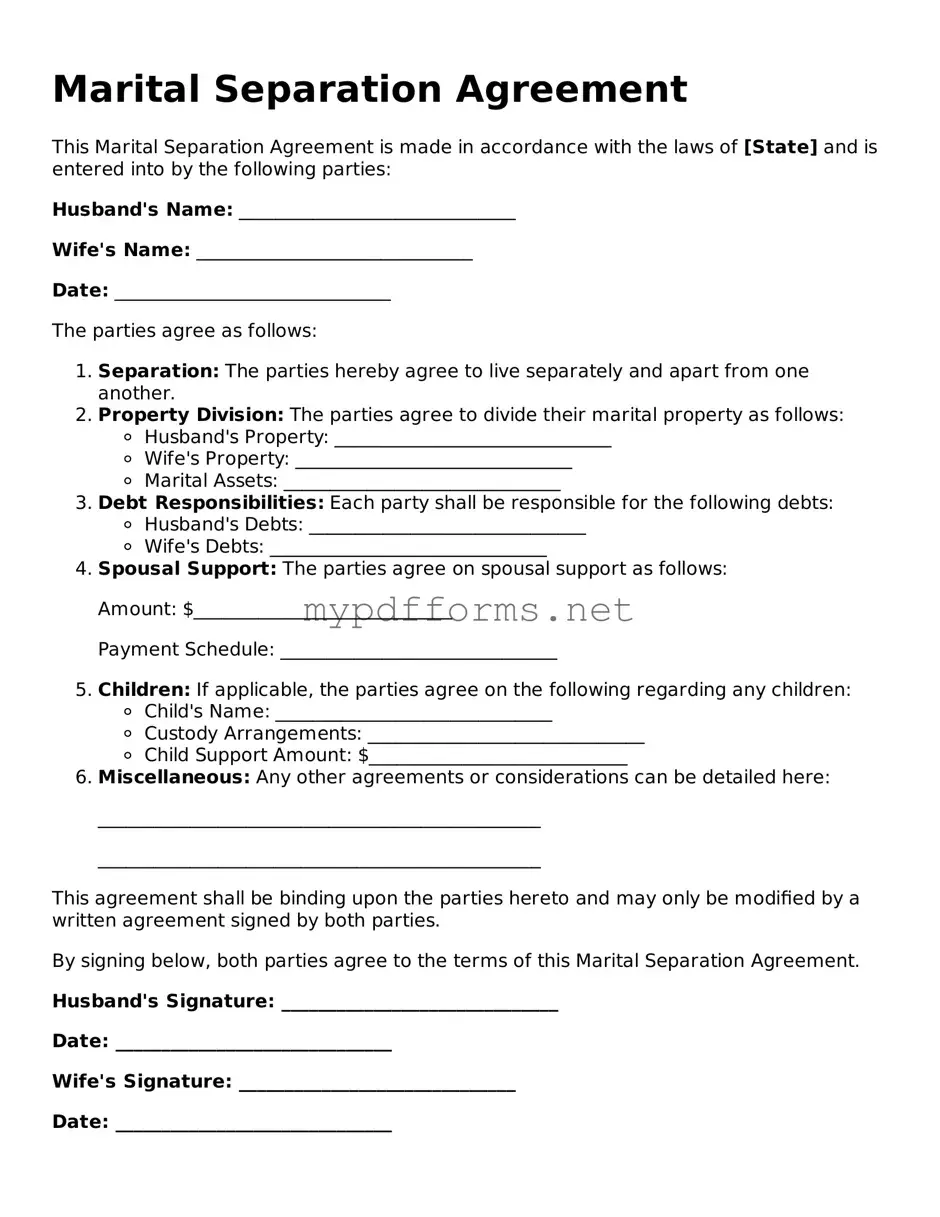A Separation Agreement is often compared to a Marital Separation Agreement. Both documents outline the terms of a couple's separation, including division of assets, child custody arrangements, and support obligations. While a Marital Separation Agreement is specifically for couples who are still legally married but living apart, a general Separation Agreement can apply to unmarried couples or those who have already filed for divorce. This document serves to clarify the responsibilities and rights of each party during the separation period.
Another similar document is the Divorce Settlement Agreement. This agreement is created when a couple has decided to end their marriage and outlines the terms of their divorce. Like a Marital Separation Agreement, it covers asset division, child custody, and support payments. However, a Divorce Settlement Agreement is legally binding and finalizes the divorce process, while a Marital Separation Agreement may simply govern the terms of living apart without terminating the marriage.
A Cohabitation Agreement also shares similarities with a Marital Separation Agreement. This document is used by couples who live together but are not married. It outlines the rights and responsibilities of each partner regarding property, finances, and other shared obligations. While a Marital Separation Agreement focuses on married couples, both documents aim to protect individuals’ interests and clarify responsibilities in a relationship.
When considering a legal framework for separation, it is also important to understand the implications of various agreements that help manage responsibilities and expectations. For those in Illinois seeking necessary documents, a valuable resource is found at Illinois Forms, where individuals can explore options like Durable Power of Attorney forms that empower trusted individuals to make significant decisions should the need arise.
Lastly, a Parenting Plan is akin to a Marital Separation Agreement in that it specifically addresses child custody and parenting arrangements. This document is essential for parents who are separating or divorcing, as it details how they will share responsibilities for their children. Both agreements emphasize the importance of the children's well-being and aim to provide a clear framework for co-parenting, though a Parenting Plan is often more focused on the day-to-day care and decision-making for the children.
